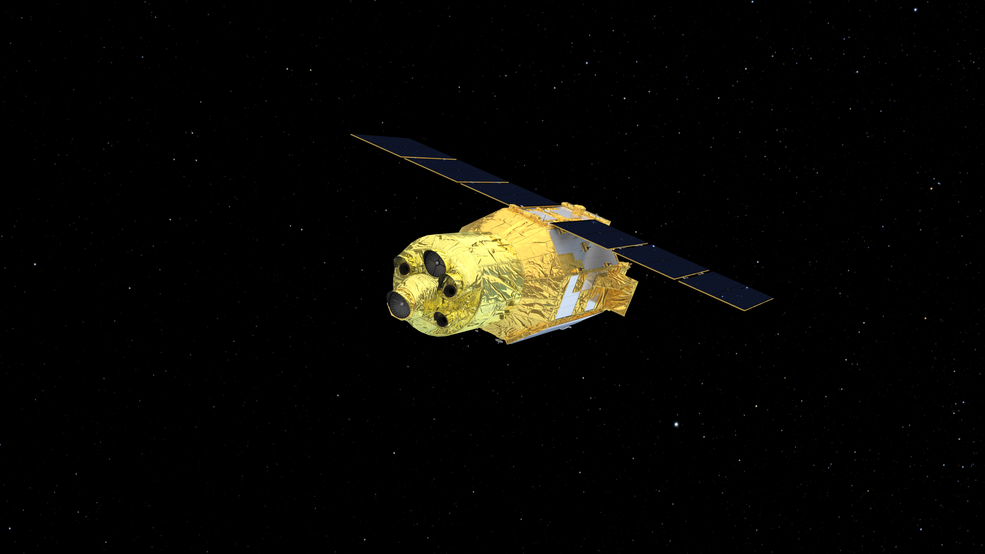13.07.2023

Japan's space agency says its lunar lander will be launched on an H2A rocket next month.
The Japan Aerospace Exploration Agency, or JAXA, on Tuesday announced the launch of the probe called the Smart Lander for Investigating Moon, or SLIM.
The SLIM project is seeking to be Japan's first lunar landing. It will test pinpoint landing technology as well as examining moon rocks.
If successful, Japan would be the fourth country to carry out a lunar landing.
Data obtained by the probe would be used for the US-led Artemis program aimed at sending astronauts to the moon for space exploration.
The H2A is to lift off from the Tanegashima Space Center in southwestern Japan on August 26 at 9:34 a.m., local time.
The launch vehicle will also carry a new X-ray astronomical satellite, XRISM, jointly developed with US space agency NASA and others.
There have been concerns over the launch of the H2A after a failed debut of the country's new flagship H3 rocket in March.
JAXA has since taken measures such as enhancing examination of parts shared by the H2A and the H3.
H2A rockets boast a success rate of 98 percent when improved H2B rockets are included. The rate is among the highest in the world.
Quelle: NHK
+++
August 26, 2023
LIFT OFF!
Launch time 9:34:57 a.m. (JST)


Project Topics
|
Japan Aerospace Exploration Agency has agreed to cooperate with European Space Agency (ESA) on the X-Ray Imaging and SpectroscopyMission: XRISM. Hiroshi Yamakawa, President of JAXA and Johann-Dietrich Wörner, Director General of ESA have signed the agreement in presence of ESA Council Delegates at the European Space Operation Center in Darmstadt, Germany on June 14, 2019. The XRISM project, kicked off in 2018, is the seventh X-ray astronomy satellite program of the Institute of Space and As... Quelle: JAXA |
----
Update: 18.07.2023
.
XRISM Mission To Study ‘Rainbow’ of X-rays
A new satellite called XRISM (X-ray Imaging and Spectroscopy Mission, pronounced “crism”) aims to pry apart high-energy light into the equivalent of an X-ray rainbow. The mission, led by JAXA (Japan Aerospace Exploration Agency), will do this using an instrument called Resolve.
XRISM is scheduled to launch from Japan’s Tanegashima Space Center on Aug. 25, 2023 (Aug. 26 in Japan).

“Resolve will give us a new look into some of the universe’s most energetic objects, including black holes, clusters of galaxies, and the aftermath of stellar explosions,” said Richard Kelley, NASA’s XRISM principal investigator at NASA’s Goddard Space Flight Center in Greenbelt, Maryland. “We’ll learn more about how they behave and what they’re made of using the data the mission collects after launch.”
Resolve is an X-ray microcalorimeter spectrometer instrument collaboration between NASA and JAXA. It measures tiny temperature changes created when an X-ray hits its 6-by-6-pixel detector. To measure that minuscule increase and determine the X-ray’s energy, the detector needs to cool down to around minus 460 Fahrenheit (minus 270 Celsius), just a fraction of a degree above absolute zero.
The instrument reaches its operating temperature after a multistage mechanical cooling process inside a refrigerator-sized container of liquid helium.
By collecting thousands or even millions of X-rays from a cosmic source, Resolve can measure high-resolution spectra of the object. Spectra are measurements of light’s intensity over a range of energies. Prisms spread visible light into its different energies, which we know better as the colors of the rainbow. Scientists used prisms in early spectrometers to look for spectral lines, which occur when atoms or molecules absorb or emit energy.
Now astronomers use spectrometers, tuned to all kinds of light, to learn about cosmic objects’ physical states, motions, and compositions. Resolve will do spectroscopy for X-rays with energies ranging from 400 to 12,000 electron volts by measuring the energies of individual X-rays to form a spectrum. (For comparison, visible light energies range from about 2 to 3 electron volts.)
“The spectra XRISM collects will be the most detailed we’ve ever seen for some of the phenomena we’ll observe,” said Brian Williams, NASA’s XRISM project scientist at Goddard. “The mission will provide us with insights into some of the most difficult places to study, like the internal structures of neutron stars and near-light-speed particle jets powered by black holes in active galaxies.”
The mission’s other instrument, developed by JAXA, is called Xtend. It will give XRISM one of the largest fields of view of any X-ray imaging satellite flown to date, observing an area about 60% larger than the average apparent size of the full Moon.
Resolve and Xtend rely on two identical X-ray Mirror Assemblies developed at Goddard.
XRISM is a collaborative mission between JAXA and NASA, with participation by ESA (European Space Agency). NASA’s contribution includes science participation from the Canadian Space Agency.
Quelle: NASA


